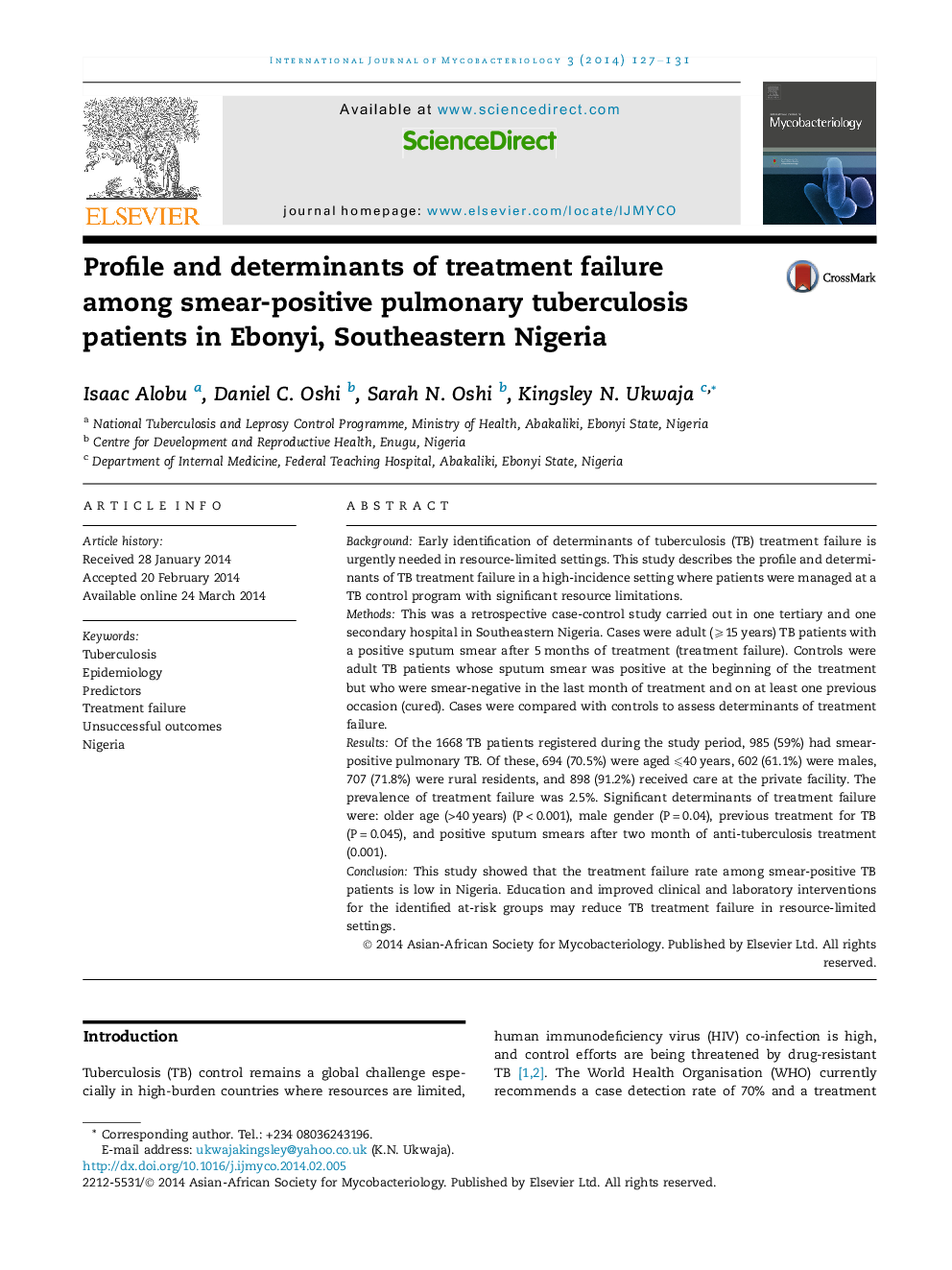| Article ID | Journal | Published Year | Pages | File Type |
|---|---|---|---|---|
| 3405297 | International Journal of Mycobacteriology | 2014 | 5 Pages |
BackgroundEarly identification of determinants of tuberculosis (TB) treatment failure is urgently needed in resource-limited settings. This study describes the profile and determinants of TB treatment failure in a high-incidence setting where patients were managed at a TB control program with significant resource limitations.MethodsThis was a retrospective case-control study carried out in one tertiary and one secondary hospital in Southeastern Nigeria. Cases were adult (⩾15 years) TB patients with a positive sputum smear after 5 months of treatment (treatment failure). Controls were adult TB patients whose sputum smear was positive at the beginning of the treatment but who were smear-negative in the last month of treatment and on at least one previous occasion (cured). Cases were compared with controls to assess determinants of treatment failure.ResultsOf the 1668 TB patients registered during the study period, 985 (59%) had smear-positive pulmonary TB. Of these, 694 (70.5%) were aged ⩽40 years, 602 (61.1%) were males, 707 (71.8%) were rural residents, and 898 (91.2%) received care at the private facility. The prevalence of treatment failure was 2.5%. Significant determinants of treatment failure were: older age (>40 years) (P < 0.001), male gender (P = 0.04), previous treatment for TB (P = 0.045), and positive sputum smears after two month of anti-tuberculosis treatment (0.001).ConclusionThis study showed that the treatment failure rate among smear-positive TB patients is low in Nigeria. Education and improved clinical and laboratory interventions for the identified at-risk groups may reduce TB treatment failure in resource-limited settings.
